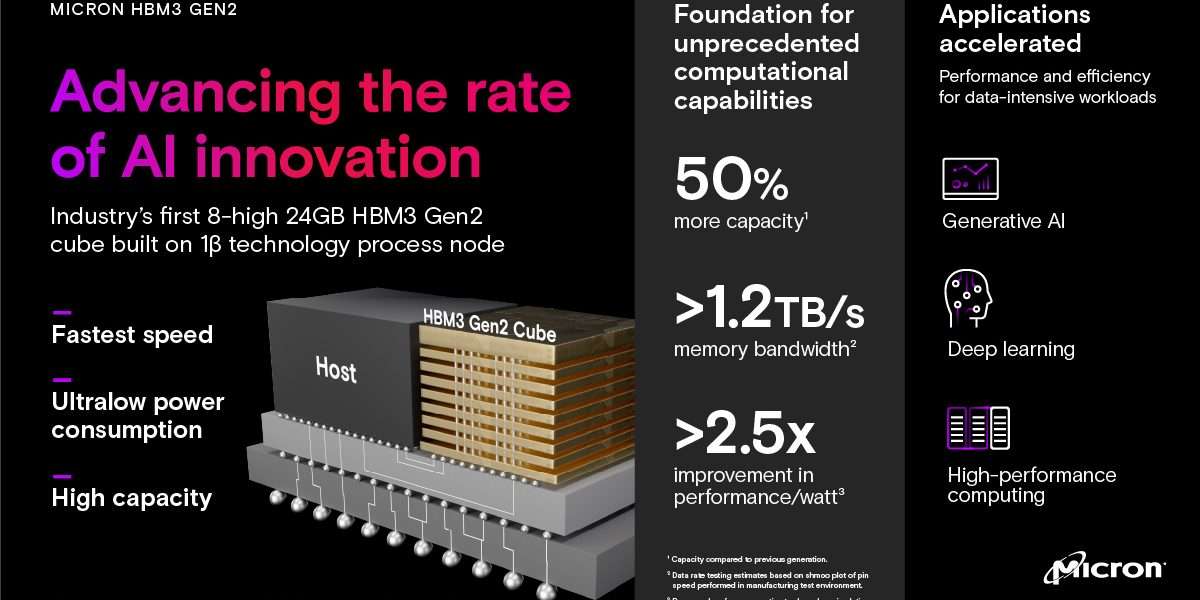Micron has just unleashed a game-changer in the world of high-bandwidth memory with its new HBM3 Gen2‚ claiming the title of the world’s fastest at an astounding 1.2 TB/s. This leap in performance opens up exciting possibilities for demanding applications like AI‚ data centers‚ and high-performance computing. The company isn’t stopping there‚ however‚ as they’re already teasing a next-generation solution capable of a mind-blowing 2 TB/s+. This relentless pursuit of memory innovation is poised to reshape the landscape of processing power and efficiency‚ pushing the boundaries of what’s achievable.
Understanding HBM3 Gen2’s Significance
HBM3 Gen2 represents a significant advancement over previous generations of high-bandwidth memory. Its increased data transfer rates translate directly into faster processing speeds and improved overall system performance. Let’s delve into some key benefits:
- Enhanced AI Training: Accelerate the training of complex AI models‚ reducing development time and enabling more sophisticated algorithms.
- Data Center Efficiency: Improve data throughput in data centers‚ leading to faster response times and better resource utilization.
- High-Performance Computing: Enable scientists and researchers to tackle complex simulations and data analysis tasks more efficiently.
- Advanced Gaming: Prepare for the future of gaming with faster load times‚ smoother frame rates‚ and more immersive experiences.
The Road to 2 TB/s+
While the current Micron’s New HBM3 Gen2 is already a powerhouse‚ the prospect of a 2 TB/s+ version is truly tantalizing. This leap in performance would unlock even greater potential across various industries. But what does this next-generation technology entail?
Possible Technological Advancements:
- Increased Stack Height: Adding more memory dies within a single stack to increase overall capacity and bandwidth.
- Improved Signaling Techniques: Utilizing more efficient signaling protocols to transfer data at higher speeds.
- Enhanced Cooling Solutions: Addressing the thermal challenges associated with higher performance memory.
- Advanced Manufacturing Processes: Leveraging cutting-edge manufacturing techniques to improve memory density and reliability.
Comparative Look: HBM3 vs. HBM3 Gen2
To illustrate the advancements‚ let’s compare some key specifications:
| Feature | HBM3 | HBM3 Gen2 |
|---|---|---|
| Data Transfer Rate (Typical) | ~ 800 GB/s | 1.2 TB/s |
| Power Efficiency | Lower | Improved |
| Application Focus | General HPC‚ AI | High-End AI‚ Data Centers |
The introduction of Micron’s New HBM3 Gen2 marks a pivotal moment in memory technology‚ pushing the boundaries of speed and efficiency. As we look ahead to the promised 2 TB/s+ solutions‚ the future of high-performance computing appears brighter than ever before.

